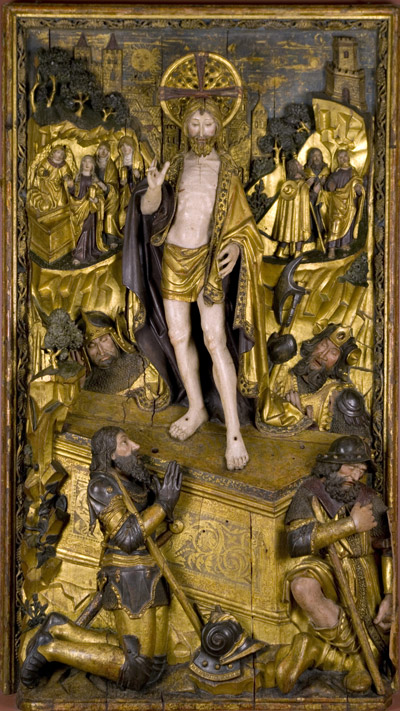Resurrection
ca. 1490
Attributed to Gil de Siloe (active ca. 1480-1500)
Polychromed wood relief
211 x 121 cm
The Resurrection relief now is attributed to Gil de Siloe, a sculptor notable for his skill in both stone and wood. Siloe carved several important commissions, perhaps none more so than the alabaster tombs (1489-93) and polychromed wood altar (1496-99) at the Cartuja de Miraflores (Burgos). With its fine and delicate details, his work on this project comprises one of the outstanding examples of Spanish Gothic art.
The Hispanic Society relief resembles Siloe's style in its figure types, landscape, and composition. The handling of Christ recalls passages in the high altar of the Cartuja de Miraflores, particularly in the proportions and delineation of the anatomy. The mound-like modeling of the cheeks, the sharp noses, and the beards resemble those on documented works by Siloe. The manner of placing two further scenes—the three Maries at the tomb on the left, and the Christ on the road to Emmaus on the right—in the background recalls Siloe's work. Finally, the construction of the landscape with rocky mountains and stylized trees compares closely with those on his altar of the Tree of Jesse (Burgos Cathedral).
No documentation survives to indicate the provenance of the Hispanic Society's relief. It may have formed part of a larger altar ensemble but who commissioned it remains unknown. A coat of arms on the soldier at the right has so far resisted identification, although some have suggested that it might belong to a guild of carpenters or masons. If true, the ensemble might then have served as an altar for a guild chapel.
Text and images © Hispanic Society of America.
